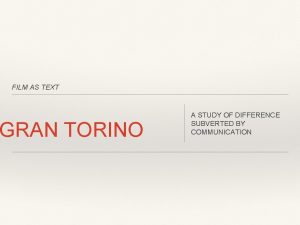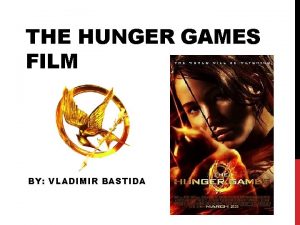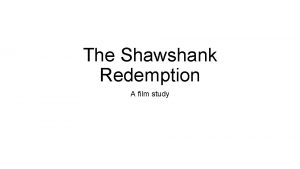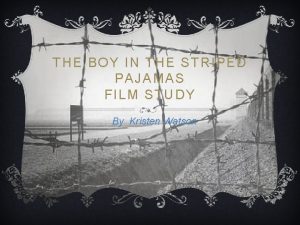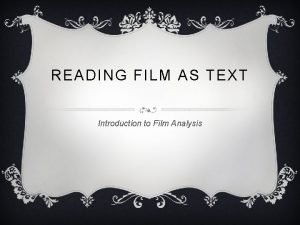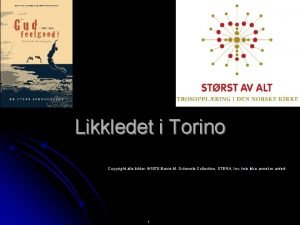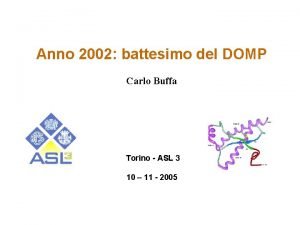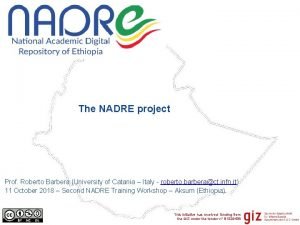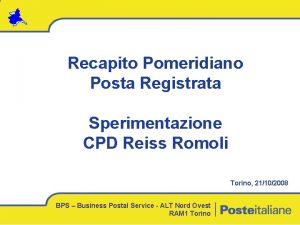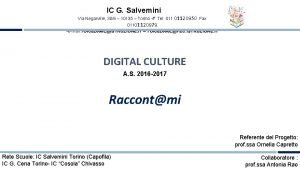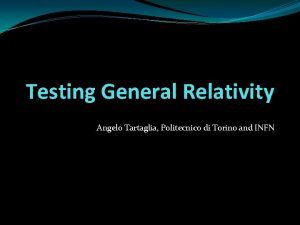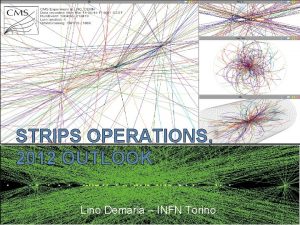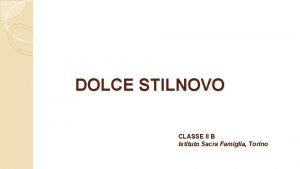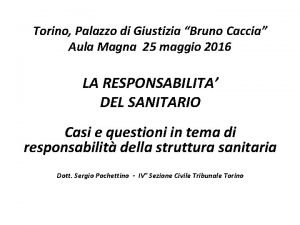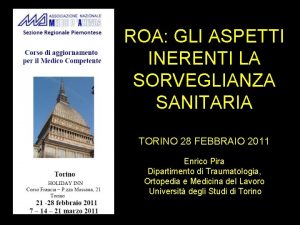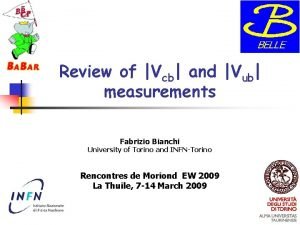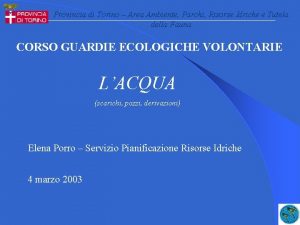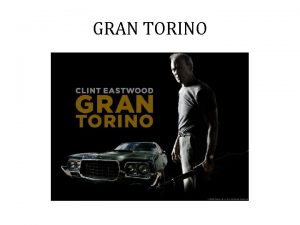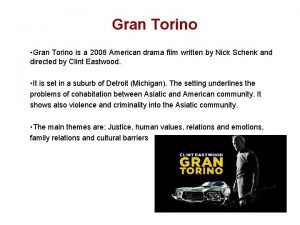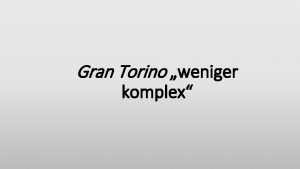FILM AS TEXT GRAN TORINO A STUDY OF

































- Slides: 33

FILM AS TEXT GRAN TORINO A STUDY OF DIFFERENCE SUBVERTED BY COMMUNICATION

Writing a text-response essay DISCUSSION QUESTION “How do cultural and age difference combined with differing value systems affect relationships”. Discuss. QUESTION THE QUESTION

Text-response essays require An introduction A series of body paragraphs, and A conclusion

Gran Torino The ‘rules’ of text-response writing

Ten rules of text-response writing 1. Brevity (brief) – why use 10 words when you can use 5? 2. Don’t refer to the essay in the essay. 3. Don’t use personal voice (I, we, you). 4. Don’t list quotes. 5. Don’t agree or disagree – just present the case. 6. Don’t retell the story. 7. Avoid references to your own life or the world. Stay within the story. 8. A story is like a painting. Everything that appears is there for a reason. 9. When you make a point support it with evidence. 10. Use connectives to link your ideas and evidence in your paragraph. Sequence is important.

Gran Torino 1. Brevity (brief) – why use 10 words when you can use 5?

Gran Torino 2. Don’t refer to the essay in the essay. In this essay I will argue that the directors aim in the film is to depict a clash of cultures, generations and social values.

Gran Torino 3. Don’t use personal voice (I, we, you). This makes you the reader consider how communication is key to relationships.

Gran Torino 4. Don’t list quotes, integrate them. (More on this later).

Gran Torino 5. Don’t agree or disagree – just present the case. I agree that The director Clint Eastwood has attempted to convey the idea that …

Gran Torino 6. Don’t retell the story. Walt teaches Thao how to become a man by showing him how to fix household appliances and cars. The relationship which develops between Walt and Thao illustrates how communication is essential for change and understanding to be achieved.

Gran Torino 7. Avoid references to your own life or the world. Stay within the story. When you meet people from different cultures and generations, you can see that they have trouble relating to each other’s views.

Gran Torino 8. A story is like a painting. Everything that appears is there for a reason.

Gran Torino 9. When you make a point support it with evidence. Evidence includes references to the text, as well as quotes.

Gran Torino 10. Use connectives to link your ideas and evidence in your paragraph. Sequence is important. Eastwood, Furthermore, However, paradoxically, due to, conversely … Build your own list of connectives of future reference.

Gran Torino TEEEEEEEL: every paragraph needs more than one example

TEEEEEEEL Topic sentence Explanation Evidence Explanation (more) Evidence (more of this too) Even more explanation and evidence, (you’re on a roll now) before you write your Linking sentence

Gran Torino Embedding quotes into your text response. Instead of: Walt’s behaviour makes things hard for everyone in his neighbourhood. For example when he yells “Get off my lawn!” Try this: Walt’s behaviour, including yelling“get off my lawn, ” makes things strained for everyone in the neighbourhood. Instead of: Walt is sarcastic when dealing with his Granddaughter, Ashley. For example when Ashley asks Walt if he wants a hand with the chairs. , Walt scowled at her and says “No, you probably just painted your nails. ” Try this: . Walt is sarcastic in situations involving his disinterested granddaughter, Ashley. When she offers help at the wake, Walt scowls“No, you probably just painted your nails” and gathered the chairs himself, thus symbolically dismissing her as lazy and insolent.

Embedding quotes – your turn How can you improve the integration of the quote in this sentence? Hint* use fewer words from the quote. Similarly, the priest is shocked by Walt’s reaction when he speaks to him at the wake; he states“I think you're an overeducated 27 -year-old virgin who likes to hold the hands of superstitious old ladies and promise them everlasting life. ” Similarly, the priest is shocked by being called “an overeducated 27 -year-old virgin who likes to hold the hands of superstitious old ladies and promise them everlasting life” by Walt at the wake.

Embedding Quotes Note! When you need to change a letter or a word or two within a quote, use square brackets. For example: Walt says “What the hell does everybody want with my Gran Torino? ”, but in your essay you might say: Walt doesn't understand “[why] the hell everybody want[s] [his] Gran Torino? Another example: Walt says “[about his son] I worked in Ford for 50 years and he sells Japanese cars. ”, but in your essay, you might say: Walt expresses his disgust with his sons choices in life including the fact that “he sells Japanese cars” when Walt fought in the war and “worked [for] Ford for 50 years”

The power of ellipsis Ellipsis is a series of dots (usually three) that indicate that some superfluous text has been omitted. For example, a Walt says the following to Thao: “You're wrong, eggroll, I know exactly what I'm talking about. I may not be the most pleasant person to be around, but I got the best woman who was ever on this planet to marry me. I worked at it, it was the best thing ever happened to me. Hands down. But you, you know, you're letting Click -Clack, Ding-Dong and Charlie Chan just walk out with Miss What's-her-face. She likes you, you know? Though I don't know why!” Although this is a wonderful piece of dialogue, you don’t need all of it in your essay, so try using ellipsis like this: As Walt becomes more involved in Thao’s life he begins to notice that Thao is lacking in self confidence and doesn't know how to talk to the girl he is attracted to ; Walt notices and attempts to encourage him to ask her out by commenting“… I know exactly what I'm talking about… I got the best woman who was ever on this planet to marry me. I worked at it, … but you, … you're letting Click-Clack, Ding-Dong and Charlie Chan just walk out with Miss What'sher-face. She likes you, you know? … I don't know why!”

More on Quotes And remember!! Don’t use quotes out of context. If you are using a quote about Walt’s encounter with the gangs, don’t use it to support your explanation of his conflicts with his children.

NOW FOR THE ESSAY

What is the question asking you, the writer, to think about and respond to?

“How do cultural and age difference combined with differing value systems affect relationships”. Discuss. ❖ You need to think about this question in relation to the film ‘Gran Torino’. ❖ ❖ What are the cultural differences explored in the film? What are the values systems adhered to by the differing cultures represented in the film? What are the age differences exposed in the film How are relationships in the film developed despite the lack of ability for the characters to be able communicate due to language, cultural and age difference?

REWRITE THE QUESTION Reflect on how cultural and generational difference and dissimilar value systems can affect understanding and communication. BECOMES “The film ‘Gran Torino’ examines how a lack of communication between different cultures and generations creates conflict”

PLAN ❖ TIME TO PLAN YOUR ESSAY THEN WRITE YOUR ESSAY

INTRODUCTION The 2008 movie “Gran Torino” directed by and starring Clint Eastwood is filled with an abundance of cultural diversity, which is met with much resistance, stereotype, and prejudice by the movies’ main character, Walt Kowalski. Walt’s world is changing; his wife dies, his Detroit neighbourhood is decaying, his relationship with his sons is distant, and his Korean War memories continue to destroy his ability to fully enjoy life. Through an unlikely bond with the Hmong children next door, Walt finally receives redemption by coming face-to-face with the same destructive prejudices consuming neighbourhood teenage gang members that have consumed him. This complex and stirring portrayal of intercultural and generational conflict can be examined by looking at the role communication and understanding plays in bridging this divide portrayed in the film.

PARAGRAPH #1 - Identity Crisis After the funeral service for Walt’s wife Dorothy, young Father Janovich informs Walt of some promises he made to Dorothy that he would look after Walt, and make sure he goes to confession. In the scene, “I confess, ” Walt and the Father do not see eye-to-eye on these promises the Father intends to keep. Not only does Walt mock the priest with his on-the-spot confession that he “never really cared much for church…and I only went because of her”, but Walt further insults him by saying he wouldn’t confess to a boy just out of seminary. The obvious cultural differences of identity, specifically age and religion, cloud both Walt’s and the Father’s perception of each other. Their cultures are stark in contrast, which makes for difficult conversation. Clearly, Walt does not think Father Janovich is credible due to his age and his religious culture of Catholicism, therefore, his dedication to his deceased wife carries no weight. Though the Father’s religious culture and beliefs makes him more tolerant and less critical of Walt’s insulting behaviour, he is unable to understand how a supposedly grieving husband could deny his wife her last wish.

PARAGRAPH #2 - Language Barriers Walt’s racial, prejudiced, and stereotyped view of the world reflects his generation, his military career and involvement in the Korean War, and his factory environment at the Ford plant. His culture of language, albeit offensive, creates a cultural divide within his own family. Though he and his family speak the same language, their inability to communicate inter-culturally creates dysfunction, as shown in the scene “Unhappy Birthday. ” Walt’s oldest son and his wife bring birthday gifts for Walt which they think are thoughtful and will make Walt’s life “easier. ” They are entirely out of touch with Walt and his goals and values and the gifts and retirement home suggestions are rejected, as is their presence. “No one can say we didn’t try”, but the audience knows better. Had they been more perceptive their presence would have been the best gift of all. A similar cultural conflict within family resulting from “language barriers” takes place in “Chill with Us, ” when Thao Vang Lor is confronted by a Mexican gang while walking on the streets near his home. Thao’s cousin and his fellow Hmong gang members come to his rescue, insisting Thao ride with them as repayment. Thao understands his cousin in both English and Chinese, but their cultures are extremely different. Thao does not “understand” his cousin’s gang culture, and therefore, does not understand the value in his words, “Chill with us, man”. The differing ideologies between Tao and his cousin prevented him from seeing the value in his cousin’s words, or his gang culture.

PARAGRAPH #3 - The Car In the movie, “Gran Torino, ” the actual Gran Torino in the film serves two popular cultures representing Walt’s 1972 culture, and the current Hmong gang culture. To Walt, the Ford beauty represents what was, what was great, and the culture of both his and the car’s heyday. “Ain’t she sweet” comments Walt about his prized possession. Seen as a possession they would like to have, the gang members agree, “Yo, it’s in mint condition, man”. The white Honda driven by the Hmong gang is also a form of popular culture. Modified, spoiler on the back, complete with a boom box, the gang’s identity and power is exemplified in everything the car provides them. The car’s boom box could be considered a separate popular culture, as well as the hip-hop and rap music the gang plays. Hip-hop or rap music stereotypically contains obscene language, promoting violence and crime. “Gran Torino” does not stray from this stereotype and the music heard booming from the gang’s car portrays what is popular with gangs and therefore, is considered part of this Hmong gang’s popular culture. The brand of beer a person drinks is considered a popular culture symbol of their social and economic class. Walt’s preference for Pabst Blue Ribbon beer tells us that he favours the regional flavour of Milwaukee, Wisconsin. Later in the movie, Walt’s “popular” preference for Pabst must be replaced with Heineken while at his Hmong neighbour’s house. But he is fine with their preferred brand, for it is after all, beer. Walt’s consumption of the beer and food bridges a communicational divide between Walt’s world and Hmong culture.

PARAGRAPH #4 - Gangs As depicted in “Gran Torino, ” Hmong gang members in real life use rape to be vindictive toward “their kind” who shuns them (Straka, 2003, p. 1). The victims rarely come forward, for the gang members are usually family, have guns, and threaten to kill them and or their families if they go to the police. There also cultural reasons why Hmong gangs use this kind of violence; “After the victims were raped, they feared being shunned by members of their families who now would consider them "damaged" or having "shamed" them. This reaction stems from the Hmong culture, which values virginity before marriage. If a girl is raped, others in the Hmong community may look down on her” (Straka, 2003, p. 1). Walt knows that for Thao and Sue the social and cultural forces are to powerful and resistant to change. He had lived a life resistant to change. He also knew he spoke the gang members’ language of violence and could communicate on their level. Exploring other, less violent communication alternatives to create a constructive rather than destructive end to the conflict could have been carried out had Walt and his Hmong neighbours joined forces to confront the gang. (He was, after all, considered a “hero. ”) Perhaps if there was better communication there could have been a peaceful resolution to the conflict. However this was not how it played out and Walt was ultimately successful in his non-violent confrontation with the gang in the end, the gang reacted violently and were was caught, and Thao and Sue were safe.

CONCLUSION The film ‘Gran Torino’ examines the impact of intercultural, generational and social values. “In the Chinese language the character for conflict is made up of two different symbols: one indicates danger whereas the other indicates opportunity” (Wilmot & Hocker, 2011, p. 9). How fitting that is, given the Chinese and Hmong cultural theme of “Gran Torino”. Walt knew “more about death than life” and he engaged in a journey of discovery with the help of Sue and Thao. Together these characters bridged the many cultural and communication gaps. Walt’s character was in need of redemption from violence, from killing Koreans, from stereotype, from hatred, from bad choices and from his sin. Thao needed a mentor and Sue a father figure, even though there was a cultural, generational and communication divide the director provided a powerful conduit through which these factors became irrelevant and real change was able to be achieved.
 Gran torino text
Gran torino text Making connections images
Making connections images Wedge film journal bearing
Wedge film journal bearing Hunger games film study
Hunger games film study Shawshank redemption story summary
Shawshank redemption story summary Film the boy in the striped pyjamas
Film the boy in the striped pyjamas Film as text
Film as text Via castelgomberto 73 torino
Via castelgomberto 73 torino Torino smart city
Torino smart city Nata a torino nel 1909
Nata a torino nel 1909 Casa sappa alessandria
Casa sappa alessandria Kledet
Kledet International training centre of the ilo torino
International training centre of the ilo torino Carlo buffa neurologo torino
Carlo buffa neurologo torino Ilotte vincenzo
Ilotte vincenzo Ccfs unito
Ccfs unito Prof barbera
Prof barbera Coppia torino
Coppia torino Torino recapito reiss romoli
Torino recapito reiss romoli Campus politecnico di torino
Campus politecnico di torino Itcilo turin italy
Itcilo turin italy Ic torino salvemini
Ic torino salvemini Aziende convenzionate promoclub
Aziende convenzionate promoclub Polisportiva san donato
Polisportiva san donato Tartaglia triangolo
Tartaglia triangolo Angelo tartaglia politecnico torino
Angelo tartaglia politecnico torino Torino
Torino Infn lnf webmail
Infn lnf webmail Carlo naldi politecnico torino
Carlo naldi politecnico torino Differenze tra scuola siciliana e dolce stil novo
Differenze tra scuola siciliana e dolce stil novo Tribunale bruno caccia torino
Tribunale bruno caccia torino Torino roa
Torino roa Bianchi torino review
Bianchi torino review Risorse idriche torino
Risorse idriche torino
